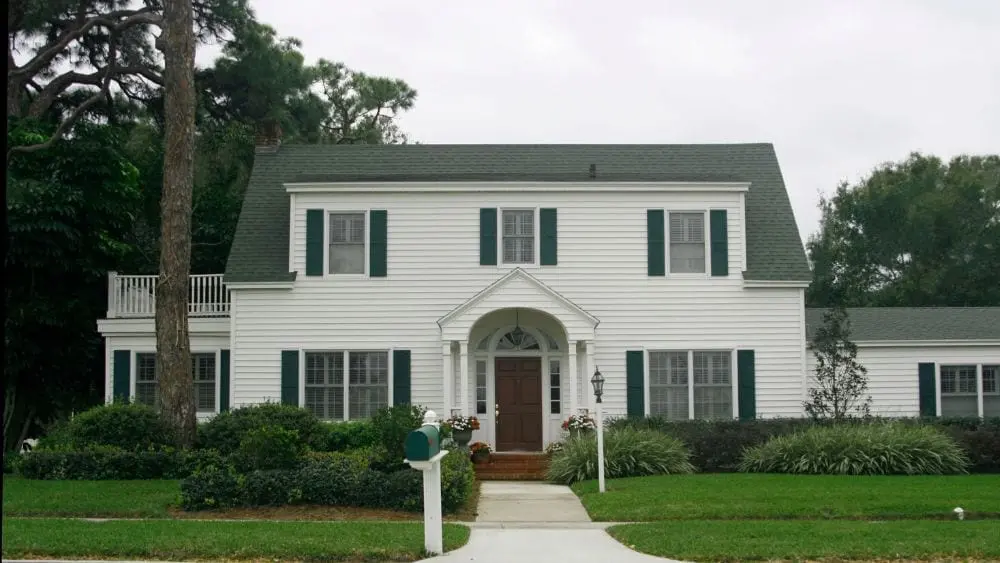
American Colonial, similar to Dutch Colonial, homes are typically two stories with five windows on the second floor and the front door directly underneath the middle window. The front door has at least one window on either side and the home often has a front porch with columns, drawing from the style’s subtle Greek and Roman influences. Paired chimneys and a stairway bisecting the home are also common characteristics. As the style evolved, glass-cut doorknobs, brass door knockers and gilt mirrors became a regular design feature.
American Colonial interiors are light and spacious with clean lines. Soft, muted colors, elaborately designed crown moldings, wide baseboards and ivory white ceilings are common wall features. Wood plays a large part in this style’s design elements, with wood flooring typically being mahogany, walnut or cherry wood. Handmade wooden furniture and cabinets are also preferred, made from pine, birch or maple with simple designs. Cast iron lamps and wall fittings, along with beautiful and ornate chandeliers, are chosen for light fixtures to create ambiance and warmth among the woodwork and muted, neutral colors.
The open spaces and iconic details such as symmetry allow for plenty of room to play and move around. Accessories to this style often include handmade quilts that adorn walls and beds.
Distinguishing Elements:
- Centered door, two stories, five windows on second story with front door directly underneath middle window, columns
- Brass knockers, gilt mirrors, cut-glass door knobs
- Soft, muted colors in interiors
- Free space and open plans
- Mahogany, cherry or walnut wood floors
 How to Incorporate Mexican-Inspired Décor into Your Home
How to Incorporate Mexican-Inspired Décor into Your Home